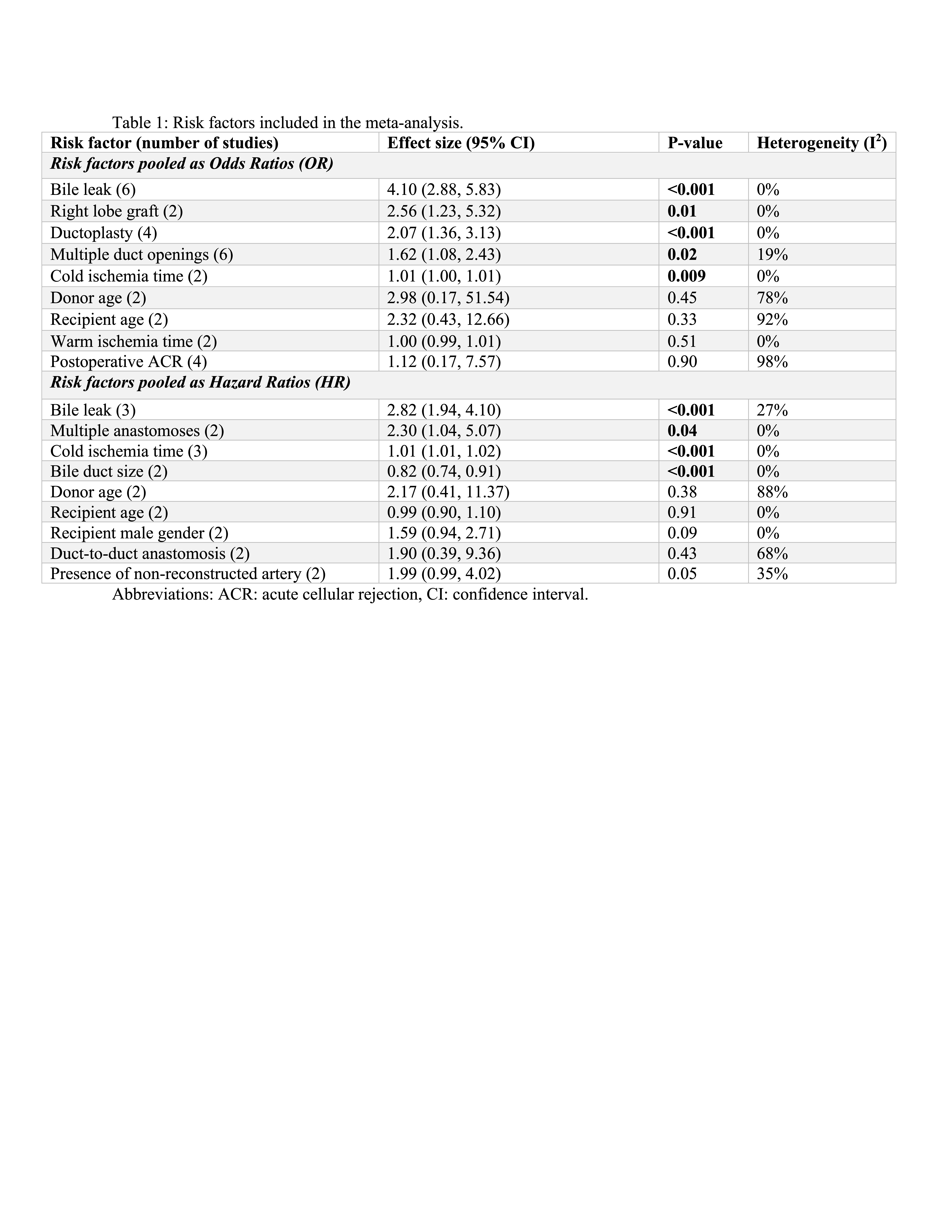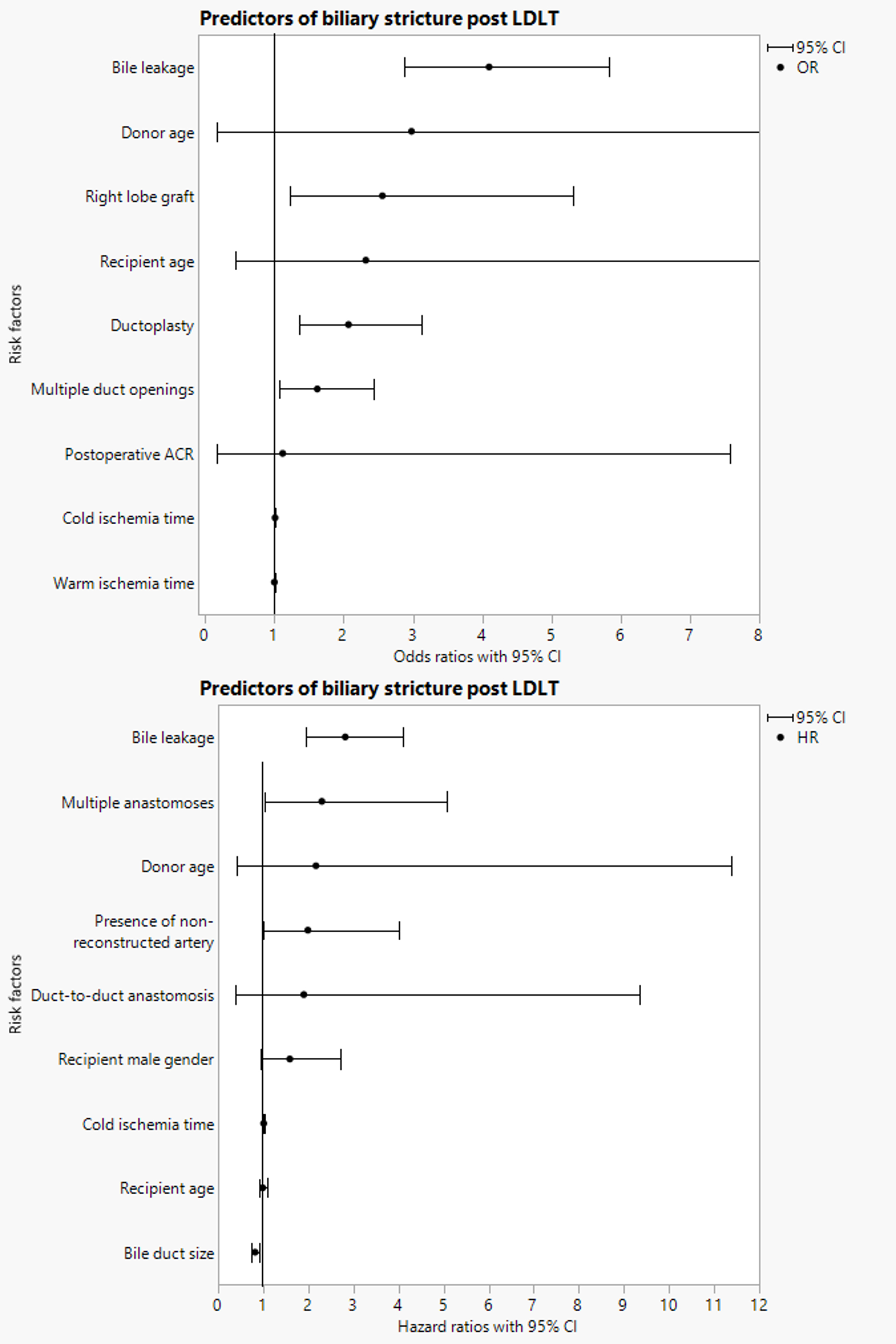Back to 2024 Abstracts
RISK FACTORS FOR BILIARY STRICTURES POST LIVING-DONOR LIVER TRANSPLANTATION: A COMPREHENSIVE SYSTEMATIC REVIEW AND META-ANALYSIS
Ramzi Hassouneh
*, Azizullah Beran, Michael S. Rosenheck, Nicholas Olchawa, Shekhar Kubal, Marwan S. Ghabril, Mark A. Gromski
Gastroenterology, Indiana University School of Medicine, Indianapolis, IN
Introduction:
Liver transplantation is the only curative treatment for end stage liver disease. Unfortunately, a significant number of patients on the organ wait list die waiting for an organ. Living-donor liver transplantation (LDLT) is an approach that has been used to expand organ availability. While LDLT have excellent outcomes, biliary strictures remain a significant complication. This meta-analysis sought to precisely assess the predictors of biliary strictures post LDLT.
Methods:
We searched PubMed, Embase, and Web of Science databases from inception until April 2023. Only studies that used a multivariate model to assess risk factors for post LDLT biliary strictures in adult participants were included. Studies reporting unadjusted risk factors were excluded. Pooled adjusted odds ratios (OR) and pooled hazard ratios with 95% confidence intervals (CI) for risk factors reported in at least 2 studies were obtained within a random-effects model.
Results:
Twenty studies with 5,894 patients who underwent LDLT were included. Biliary stricture rate was 22% (n=1,287). Fourteen unique risk factors were analyzed. Twelve studies reported data as adjusted OR and eight studies reported data as adjusted HR. Post-operative bile leak (OR 4.10 [2.88-5.83] and HR 2.82 [1.94-4.10]) was the most significant predictor of biliary stricture post-LDLT. Other significant predictors of biliary stricture post-LDLT were right lobe graft (OR 2.56 [1.23-5.32]), multiple anastomoses (HR 2.30 [1.04-5.07]), ductoplasty (OR 2.07 [1.36-3.13]), multiple duct openings (OR 1.62 [1.08-2.43]), and longer cold ischemia time (OR 1.01 [1.00-1.01] and HR 1.01 [1.01-1.02]). Bile duct size was inversely associated with biliary stricture post-LDLT (HR 0.82 [0.74-0.91]). Recipient male gender, donor age, recipient age, warm ischemia time, postoperative acute cellular rejection (ACR), duct to duct anastomosis, and presence of non-reconstructed artery were not associated with increased risk of biliary stricture post-LDLT. All analyzed risk factors are summarized in Table 1 and highlighted in Figure 1.
Conclusion:
In this meta-analysis, seven unique risk factors were shown to be predictive of post-LDLT biliary stricture. Identifying reliable predictors is crucial for recognizing high-risk patients. This can facilitate implementation of preventative measures, surveillance protocols, and targeted interventions to reduce the incidence of biliary strictures post-LDLT.

Table 1. Risk factors included in the meta-analysis.

Figure 1. Predictors of biliary strictures post-LDLT presented as odds ratio (OR) or hazard ratio (HR) with confidence intervals (CI).
Back to 2024 Abstracts

